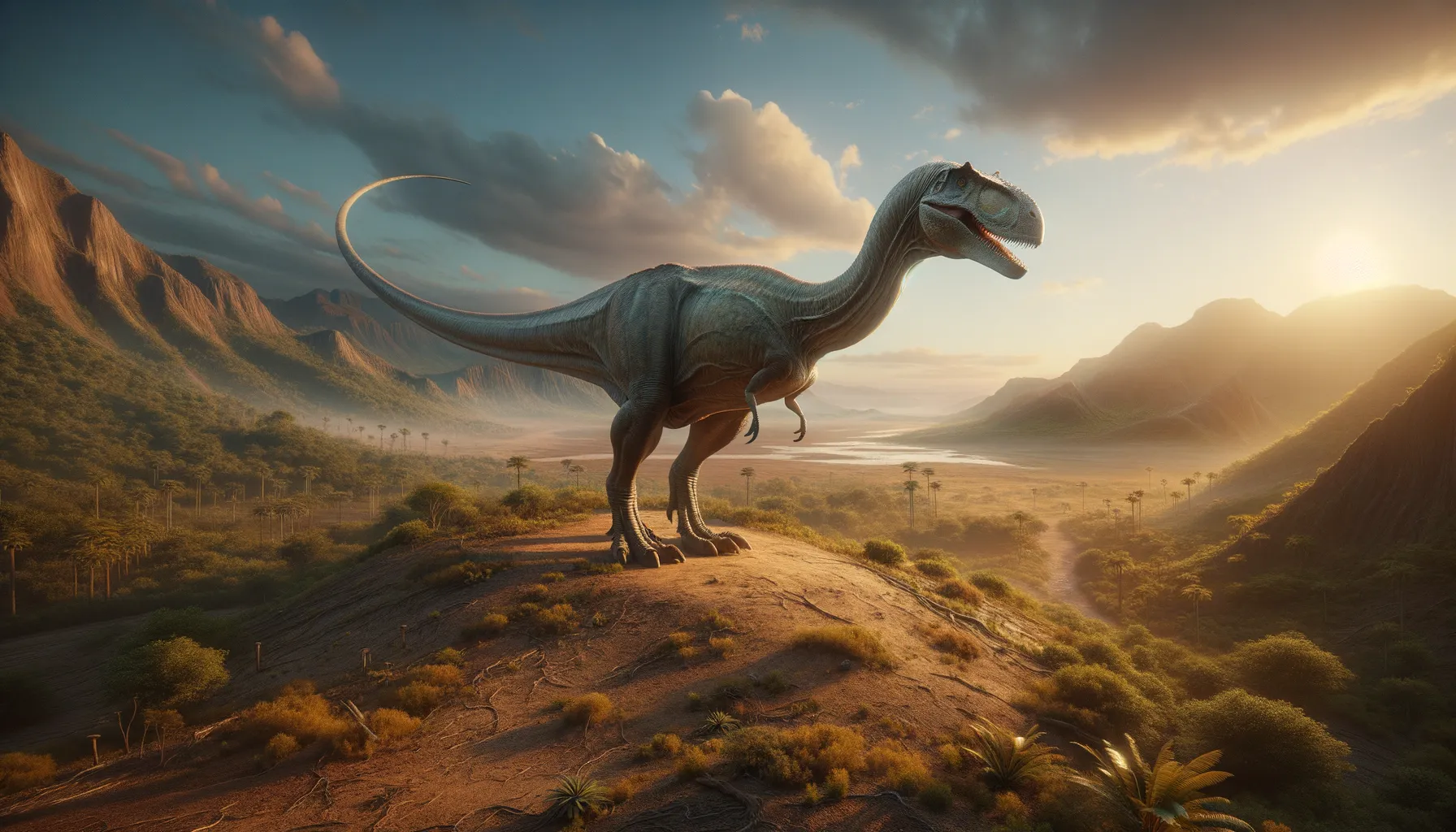
Vouivria
A gentle giant of Cretaceous Europe!
Period
Cretaceous
Length
Reached lengths of up to 15 meters.
Height
Approximately 5 meters tall.
Weight
Weighed around 15 tons.
Vouivria was a massive sauropod dinosaur that roamed Europe during the early Cretaceous period. It was characterized by its long neck and tail, sturdy limbs, and herbivorous diet. As one of the earliest titanosauriforms, Vouivria provides valuable insights into the evolution of giant sauropods. Its fossils, found in France, have helped researchers understand more about this fascinating group of dinosaurs.
Diet
Vouivria was a herbivore, feeding primarily on plants. Its long neck allowed it to reach vegetation in higher places that other herbivores could not access.
Hunting
Being a plant eater, Vouivria did not hunt other animals. Instead, it might have foraged for food in various environments, using its height to access tall foliage.
Environmental challenges
During its time, Vouivria faced competition for food with other herbivorous dinosaurs. Climate changes might also have influenced its habitat, requiring it to adapt to new plant life. Predation by large theropods could have been a threat requiring protective group behaviors.
Speed
Likely slow-moving due to large size.
Lifespan
Estimated to live several decades.
First discovery
First identified from fossils found in France.
Fun Facts
- Vouivria is a sauropod dinosaur, which means it was a long-necked giant herbivore.
- The name Vouivria is inspired by a mythical serpent-like creature called Vyvyre in French folklore.
- It lived during the Early Cretaceous period, which was around 130 million years ago.
- Vouivria's fossils were first discovered in France, making it a unique addition to European dinosaur discoveries.
- The dinosaur was only officially named and described in 2017, although its fossils were initially found in the 1930s.
- Vouivria might have been one of the oldest known members of the titanosauriform group of dinosaurs.
- The findings about Vouivria have helped scientists understand more about the early evolution of the largest land animals ever to roam the Earth.
Growth and Development
Like many sauropods, Vouivria likely experienced rapid growth during its early years. This fast growth could have helped it avoid predation by quickly reaching a size less vulnerable to attackers. Development into a full-sized adult would have taken several years.
Habitat
Vouivria inhabited regions that included lush floodplains and forests of ancient Europe. Such environments provided abundant plant life for feeding. Seasonal changes in these habitats might have influenced its migratory and social behaviors.
Interaction with other species
Vouivria likely coexisted with other herbivorous dinosaurs, sometimes competing for similar food sources. It could have shared its environment with carnivorous theropods, which might have posed a threat to young or injured individuals. Sharing resources and spaces would have been a regular part of its life.
Natural lifespan
Vouivria could naturally live for several decades.
Reproduction
Reproduction among Vouivria would have been through laying eggs. Nests could have been communal or solitary based on environmental conditions. Hatchlings were likely vulnerable to predators until they grew larger.
Social behaviour
Vouivria might have lived in groups to protect against predators and facilitate migration. Social structures could have played a role in feeding behaviors and reproductive success. Interactions within groups might have been necessary for communication and herd dynamics.
Fossil locations
The primary fossils of Vouivria have been found in France. These discoveries have helped establish its identity and role within the Cretaceous period. The fossils contributed significantly to understanding its anatomy and evolutionary significance among sauropods.
